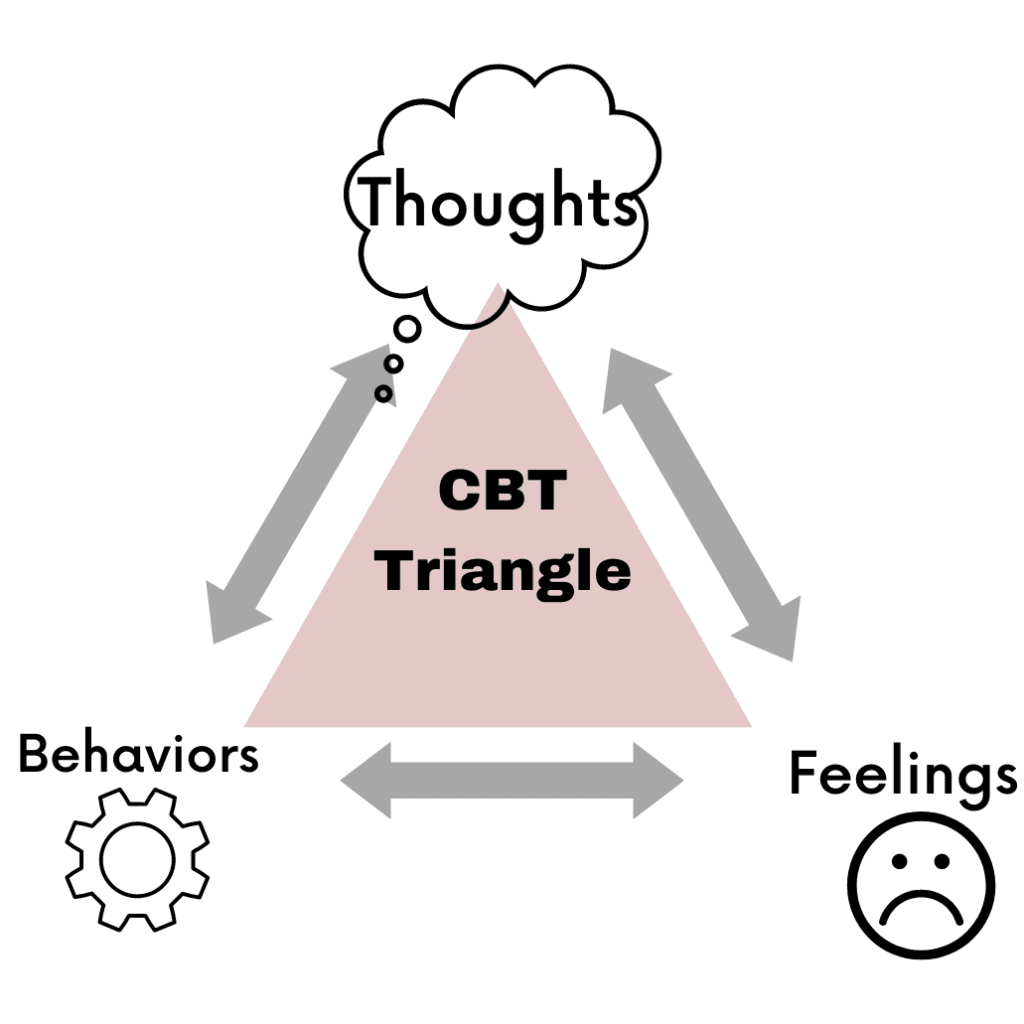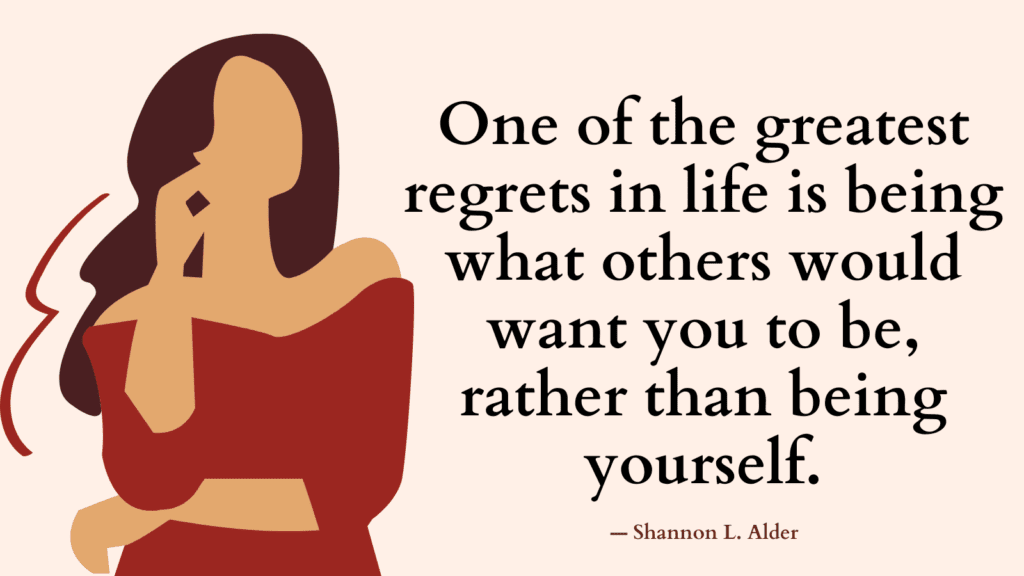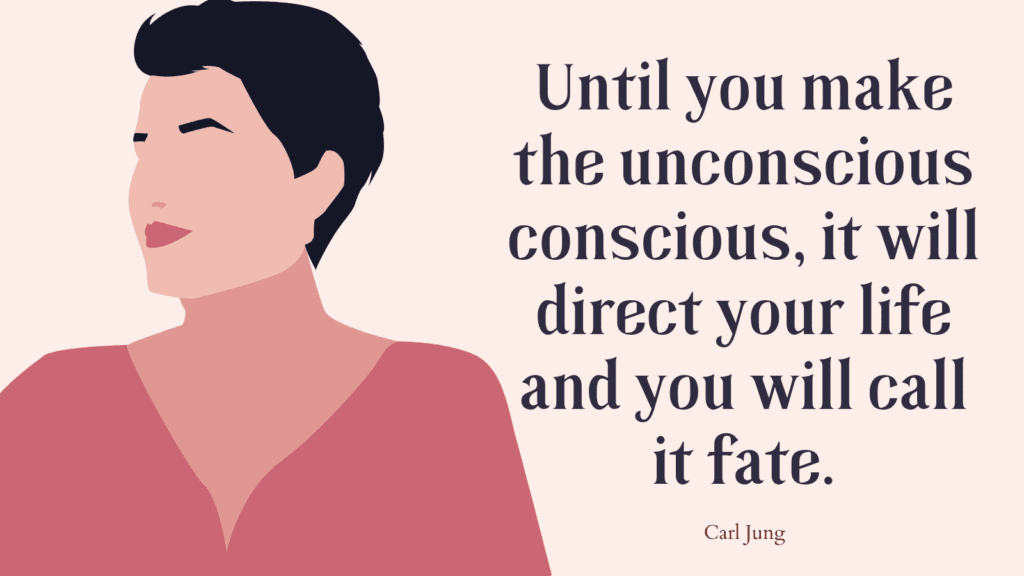This post contains CBT triangle worksheet free download along with an explanation of what Cognitive Behavioral Therapy is.
What Is CBT?
Cognitive Behavioral Therapy CBT is a form of psychotherapy that focuses on cognition (thoughts) and behavior (actions).
Which Principle Underlies Cognitive Therapy
CBT suggests that the way we think and behave can have a positive or negative influence on our feelings.
Therefore, CBT focuses on how to change our feelings through changing our thoughts and behavior.
CBT uses scientifically verified strategies to help people feel better now and in the long term.
More and more studies are proving the effectiveness of CBT as a treatment for a number of psychological issues like anxiety, depression, eating disorders, and trauma.
Related: CBT Worksheets Bundle (FREE PFD Download)
What Is The CBT Triangle?
CBT suggests that our thoughts can change the way we feel, which subsequently changes the way that we behave, which also influences our thoughts.
The process continues to repeat, creating a triangle.
For example, you may decide to ask your boss for a well-deserved pay raise, but have the thought that your boss will say no. You then feel discouraged and decide not to ask.
CBT Triangle Worksheet
How To Change The Process?
Changing one of the three elements (thought, feeling, behavior) can be enough to influence the other elements.
However, it can be easier to change our thoughts or behavior than to change our feelings.
Related: Top 10 Practical CBT Exercises For Generalized Anxiety Disorder Relief
Challenging Thinking Errors
When you identify thinking errors you tend to make, you can increase your chances of catching yourself in the act and correct it.
The following are common thinking errors you may have experienced:
1. Catastrophizing
This is when we take a relatively minor event and imagine the worst scenarios resulting from it.
Decatastrophizing Your Thought:
- Is this thought necessarily true?
- Is this thought consistent with the evidence?
- What is the evidence for and against this thought?
- Are there other ways of thinking about the situation?
- If the worst happens, what steps can I take to cope with the situation?
2. All-or-nothing thinking
Also called ‘black or white’ thinking. This is when we assume that a situation is entirely good or entirely bad, no in-between.
Finding a point between the extremes:
- Are you focusing on only one aspect of the overall situation and giving it too much importance?
- What would be a more accurate and fair rating to give this aspect of the situation on a scale of one to ten?
- What other aspects of the situation can you consider to view things more realistically?
Related: CBT For Phobias – Top 7 Phobias To Overcome For Good Using Cognitive Behavioral Therapy
3. Demands
These are rules we expect ourselves, others, and the world to follow and never break. Demands come in the form of “should” and “musts”.
Making your thinking more flexible:
- What kind of language are you using? Are you using terms like ‘should,’ or, ‘must,’ or, ‘have to’?
- Are you accepting that other people may not follow your rules and use their own free will?
- Is it possible for you to allow yourself and others to fall short of your own standards?
- Are your demands realistic?
- How can you keep your standards and ideals but turn your demands into preferences?
4. Fortune-telling
This is when we make predictions about the future and firmly believe that our predictions are correct. The problem is that most of our predictions are likely to be negative and this can stop us from taking goal-oriented action.
For example, if you predict that your boss will say no if you ask for a pay rise, you may never ask for one.
Testing your prediction:
- What are the benefits of taking action despite your negative prediction?
- If your predictions were true, what steps can you take to handle potential problems?
Related: How To Let Go Of OCD? Top 6 Powerful Strategies to Treat OCD Using CBT (+FREE OCD Resources)
5. Mind reading
This is when we assume that others are thinking in judgmental ways about us.
Testing your mind reading:
- What is the evidence that this thought is true?
- Are you confusing a thought with a fact?
- What are some alternative explanations for your assumptions?
6. Emotional reasoning
This is when we decide that our emotions are a true reflection of what is actually going on in reality.
For example, you may feel anxious and believe that you are in danger.
Separating fact from feeling:
- What emotion are you experiencing?
- How might your emotions be causing you to distort the facts?
- What fact might you be ignoring because of your emotions?
- How would you view the situation when you’re feeling calmer?
7. Over-generalizing
This is when we make widespread judgments about ourselves, others, or the world. Over-generalization statements come in the form of ‘always,’ or, ‘never.’
Being more specific:
- What is the specific thing that you’re basing your conclusion on?
- Are you making a total conclusion based on one specific aspect?
- What other aspects are you ignoring?
Related: How To Stop Self-Critical Thoughts Using These Top 10 Techniques
8. Labeling
This is when we call ourselves, others, and the world names.
You may call yourself ‘loser’ every time you make a mistake or the world ‘cruel’ every time you’re faced with a challenge.
Giving up labeling:
- Are you being fair when you use this label?
- Are you allowing for varying degrees of goodness and badness in yourself, other people, or the world?
- How can you label the specific action or situation instead of the whole person?
Related: FREE Therapy Journal Template
9. Mental Filtering
This is when we let through information that is in line with what we already believe about ourselves, other people, or the world.
For example, if you believe that you’re unlovable, you’ll only process information that validates that belief.
Thinking without filters:
- What is your filter? What do you believe about yourself, others, or the world?
- What information are you ignoring because of your filter?
- How would you think or behave differently if you were to remove your filter?
10. Personalizing
This is when we make random events a personal issue. This may cause us to assume inappropriate responsibility for events and feel negative emotions in response to those events.
- Are you taking responsibility for things that are not under your control?
- Other than you, what or who else has contributed to the outcome of the situation?
- Was what happened really about you?
Related: Negative Core Beliefs List (& 8 Tips On How To Challenge Them)



